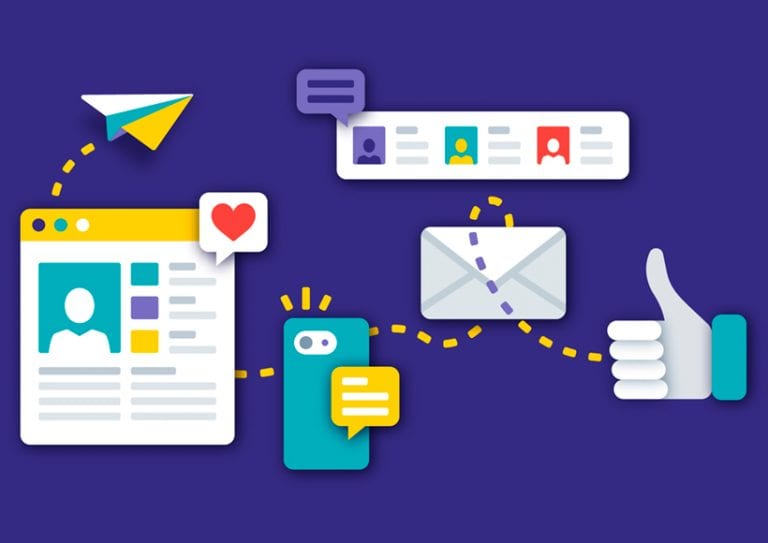Sign up for a complimentary subscription to Today's General Counsel digital magazine.
November 30, 2020

Today’s collaboration data landscape is almost unrecognizable from what it was in the recent past. About 83 percent of enterprise workloads live in the cloud; app usage has grown by 68 percent over the last four years; and a Harvard Business Review study found that 89 percent of enterprises use some form of collaboration platform for internal communications. As tools like Slack, Zoom and Microsoft Teams gain momentum — significantly accelerated this year by work from home — the corporate data landscape will become increasingly dispersed.
From an e-discovery perspective, this explosion in adoption of new cloud, chat and collaboration tools has created two pressing issues: (1) accessing data residing in disparate platforms and (2) what to do with it once we have it. Beyond those challenges, digital collaboration data is upending the way we approach and conduct e-discovery. In many ways, it is challenging certain aspects of the Electronic Discovery Reference Model and the way we think about traditional document review. As Slack and collaboration app data continue to proliferate, this will grow more complex. E-discovery teams must be prepared to flex their conventional orientation to data review and learn new ways of incorporating emerging data types into workflows.
Before we dig into exactly how to navigate cloud and collaboration data in e-discovery, it’s important to have a solid footing on how the current tools are impacting the creation and flow of information. Many applications provide users with persistent chat functionality, the ability to split users among public and private channels, and integration with other platforms. They may be used for communications, file sharing, project management, storage and connectivity between organizations. Legal and compliance teams should establish a bridge with IT to understand the universe of applications in use within the organization; what versions of Slack, Teams or other platforms are deployed; and the existing rules and how they are managed.
[su_pullquote align=”right” class=”entry-title”]Legal and compliance teams should establish a bridge with IT to understand the universe of applications in use within the organization.[/su_pullquote]
Our team’s first in-depth e-discovery matter with an unconventional cloud data source was about five years ago in an IP theft litigation that involved key evidence within our client’s internal Slack channels. A team of developers had left our client’s organization and started a competitive company with a remarkably similar product offering. We were tasked with identifying their dealings with and conversations about the client’s IP in Slack. We learned a lot about the nuances of working with collaboration apps during that matter and were able to help the client piece together key information for the case.
As the tools have evolved, so have the ways in which they are showing up in e-discovery. Over recent years, our team has developed expertise in collecting data from emerging cloud sources, rendering it for compatibility in e-discovery tools, and creating efficient workflows for finding key information within these short-form messages.
Data collection methods for Slack and other cloud applications are often dependent on the version in use. Access and export options can vary widely, and in most cases technical expertise is required to extract the files and load them into the e-discovery platform. Some tools offer additional capabilities and application programming interfaces for interfacing and integrating with app data.
Additional challenges arise after app data has been collected and extracted. Rendering messages and files into a format compatible with e-discovery that can be analyzed and reviewed outside of its source application is tricky. Looking at a single chat message in isolation doesn’t offer context or relevance to a broader matter. At the same time, individually reviewing tens of thousands of messages in a collaboration channel is a disproportionate use of time, budget and resources.
To uphold the truest representation of a Slack message (or data from other collaboration and cloud applications), teams must understand that these new formats are not necessarily suited to existing discovery tools, processes and workflows. Instead of treating them like conventional data, teams must lean on experts with an understanding of the nuances in new data formats to create efficient, custom review workflows that can zero in on relevant data. This also makes it possible for the legal team to see beyond the content from cloud applications and tie it together with messages from other sources. Conversations about a single topic or issue may start in one app, later move to email, and continue via text messages. The ability to group these related conversations together in a single view is critical to helping legal teams understand their data and build their case.
The environment in which e-discovery and investigations take place has shifted in a profound way. Our approaches to data collection, review and analysis must shift too. We can look at data and analyze information in place and make decisions about it before we move it. We can prepare visual analysis of key content across a massive data universe. We can skip or simplify steps that are obsolete for new types of data and gain faster access to the information we need. Collaboration apps undoubtedly add new, complicated layers to the e-discovery process. But by shifting conventional viewpoints and opening up to new workflows, legal teams will find dealing with new data types far less daunting.
By Tim Anderson
Tim Anderson is a Managing Director in the FTI Technology segment based in San Francisco. He has more than 15 years’ experience in legal technology. He specializes in developing strategies for the preservation, collection, analysis, review and production of electronically stored information (ESI) in enterprise data sources ranging from traditional repositories such as email and document management systems, to cloud-based systems like Slack, Box and Google Apps.
Sign up for a complimentary subscription to Today's General Counsel digital magazine.
Sign up for our free daily newsletter for the latest news and business legal developments.